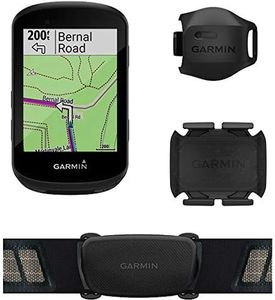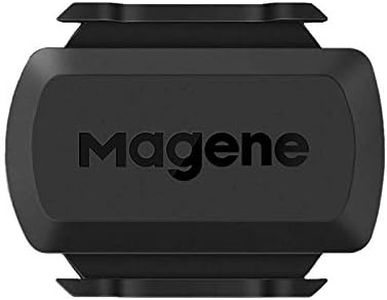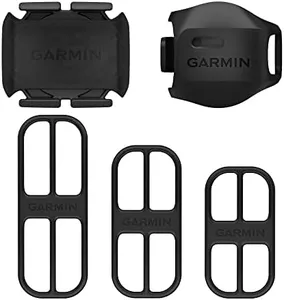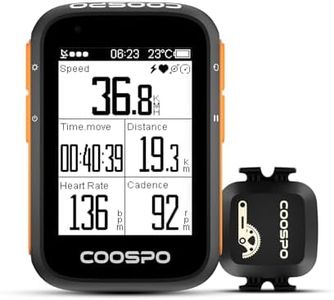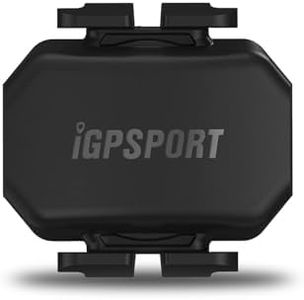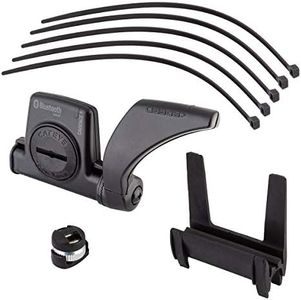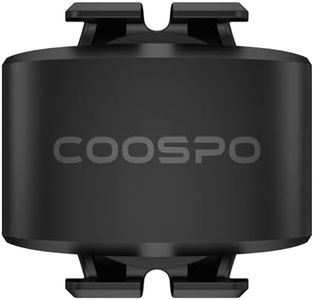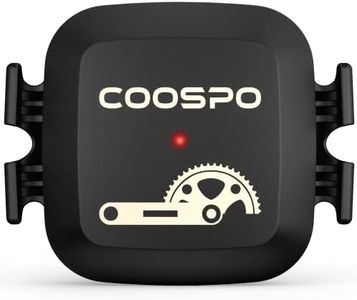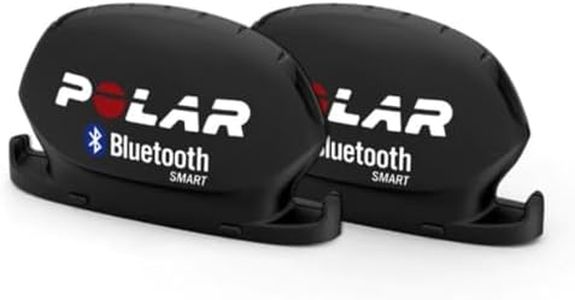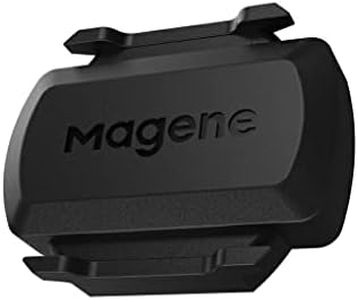We Use CookiesWe use cookies to enhance the security, performance,
functionality and for analytical and promotional activities. By continuing to browse this site you
are agreeing to our privacy policy
10 Best Bike Cadence Sensor
From leading brands and best sellers available on the web.Buying Guide for the Best Bike Cadence Sensor
Choosing the right bike cadence sensor can greatly enhance your cycling experience, especially if you're interested in tracking and improving your performance. A cadence sensor measures how fast you pedal, giving you valuable feedback for training or casual rides. When shopping for one, it's important to be aware of the main features and understand how they align with your biking habits and technology setup. Thinking about where and how you bike most often and how much you care about detailed ride data will help you pick a sensor that fits smoothly into your routine.Sensor Type (Cadence Only vs. Combo Sensors)This spec identifies whether the device measures only cadence (pedal revolutions per minute) or both cadence and speed. If you want to focus exclusively on your pedaling speed, a cadence-only sensor is simple and often less bulky. Combo sensors also track your bike's speed, which provides more comprehensive data. If you like analyzing your rides in detail or need both metrics for your training, the combo type is best. For casual riders or those who already have a speed sensor, cadence-only should suffice.
Connectivity (ANT+ vs. Bluetooth)This spec defines how the sensor sends data to your bike computer, smartwatch, or phone. ANT+ is commonly used by cycling computers and some fitness watches, while Bluetooth works with smartphones and modern devices. Some sensors offer both. If you already own a head unit or watch, check which wireless standard it supports. If you use multiple devices or may upgrade soon, a dual-protocol sensor adds flexibility and future-proofs your choice.
Mounting MethodCadence sensors can attach to your bike in a few different ways, usually on your crank arm using zip ties, rubber bands, or direct adhesives. Some even mount directly to your shoe. Think about how often you plan to remove or switch the sensor between bikes; easy-mount systems or shoe-mounted types make this faster. Permanent mounts might feel more secure but are harder to move. Decide based on whether you have one main bike or share the sensor across bikes.
Battery LifeThis detail tells you how long the sensor can operate before needing a new battery. Some use replaceable coin cell batteries that last months to a year, while others are rechargeable via USB. If you want to minimize maintenance and don’t want to think about charging, long battery life from a coin battery is convenient. Riders who like reusing devices and can regularly charge electronics may find USB-rechargeable sensors handy. Pick what aligns best with your routine and habits.
Compatibility with Apps and DevicesThis refers to which smartphone apps, cycling computers, or fitness watches the sensor will work with. Some sensors clearly list compatible devices and popular apps. Before you buy, double-check that the sensor supports your preferred apps (like Strava, Garmin Connect, or Apple Health) or your specific cycling computer. This avoids frustration and ensures you can actually use the data as intended.
Water ResistanceThis spec indicates how well the sensor withstands water from rain, puddles, or mud. If you bike in all weather or on muddy trails, look for sensors with ratings like IP67 or IPX7, which means they can handle splashes or submersion. For fair-weather riders or those mainly using indoor bikes, basic water resistance might be enough. Think about where and when you’ll ride to know how much protection you really need.
